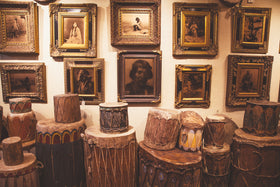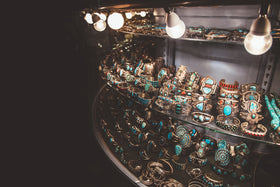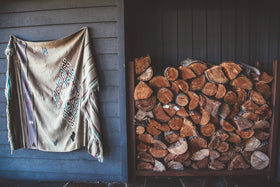Antique Cigar Store Indians

Cigar Store Indians are three-dimensional wooden sculptures traditionally used as trade signs. The practice dates to the 1600s. As ships from America began bringing tobacco back to England, cigar shop owners displayed the figures outside their stores to attract the attention of potential customers. Early carvings were made by European men who had experience sculpting decorative wooden figureheads for ships. As the shipbuilding industry transitioned away from wooden ships, there was no longer a need for skilled ship carvers. Many of these men turned to producing carousel figures and cigar store Indians. However, these craftsmen were unsure of what a Native American looked like, resulting in carvings that resembled black men or "Virginians" with exotic feathered headdresses. By the time the figures arrived in America in the late 18th century, they began to take on a more accurate, yet stylized, appearance.
American carvers sculpted a variety of figures, the most common being the "noble savage" (with a passive stance and stoic expression) and the "warrior" (brandishing a weapon). Most held tobacco in their hands or had leaves painted somewhere on their clothing. These figures were commonly made of white pine and ranged from several feet tall to life-sized and larger. Due to the level of illiteracy and the large non-English-speaking population, shop owners relied on these figures, symbols, and emblems to advertise their products.
Around 1900, America's streets were becoming overcrowded, and cities began passing obstruction laws requiring at least two feet of space in front of each store. This, in conjunction with manufacturing costs, restrictions on tobacco advertising, and the increase in racial sensitivity, would eventually cause cigar store Indians to lose their popularity with retailers.
It is believed that over 100,000 cigar store Indians were carved in the past for display. Today, a cigar store Indian in its original condition is a rarity. Many were tossed, destroyed, or simply did not survive the elements. Carved Indians with their original paint are difficult to find as they were routinely repainted for maintenance. Collectors determine the value of a cigar store Indian by its condition, artistic form, the quality of the carving, as well as who the carving is attributed to. Notable carvers command a premium, and their valuable works are generally only found in museum collections.
Cisco’s collection of cigar store Indians represents decades of collecting, featuring pieces of varying sizes from prominent time periods and important carvers. Click here to view the complete collection.




